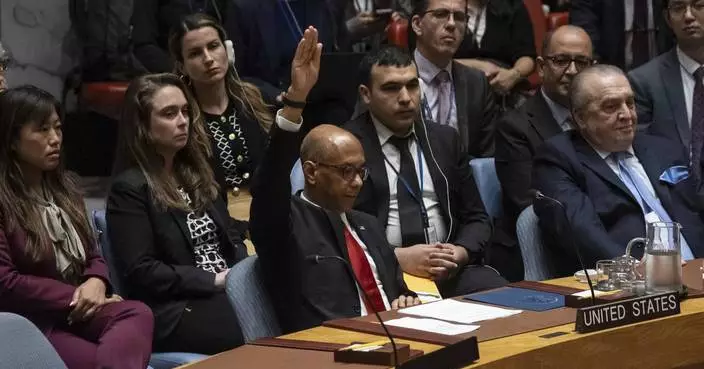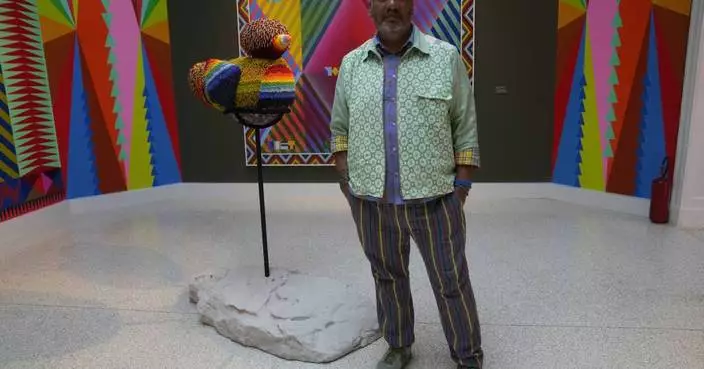Democratic presidential candidate Bernie Sanders is proposing a criminal justice overhaul that aims to cut the nation's prison population in half, end mandatory minimum sentencing, ban private prisons and legalize marijuana. He says the current system does not fairly treat people of color, addicts or the mentally ill.
"We have a system that imprisons and destroys the lives of millions of people," Sanders told The Associated Press before the planned released of his proposal Sunday. "It's racist in disproportionately affecting the African American and Latino communities, and it's a system that needs fundamental change."
Sanders was promoting the plan during a weekend of campaigning in South Carolina, where the majority of the Democratic electorate is African American. The Vermont senator, who won the support of some younger black Democrats during the 2016 primary, has stepped up his references to racial disparities, particularly during stops in the South and urban areas.
As president, Sanders said he would abolish mandatory minimum sentencing and reinstate a federal parole system, end the "three strikes law" and expand the use of alternative sentencing, including community supervision and halfway houses. The goal is to reduce the prison population by one-half.
"A very significant number of people who are behind bars today are dealing with one form or another of illness," Sanders said. "These should be treated as health issues, not from a criminal perspective."
According to the National Alliance on Mental Illness , 2 million people with mental illness are booked into jails annually.
Taking aim at what his proposal calls "for-profit prison profiteering," Sanders would ban private prisons, make prison phone calls and other inmate communications free, and audit prison commissaries for price gouging and fees.
The plan would legalize marijuana and expunge previous marijuana convictions, and end a cash bail system that Sanders says keeps hundreds of thousands who have not been convicted of a crime languishing in jail because they cannot afford bail.
"Can you believe that, in the year 2019, 400,000 people are in jail awaiting a trial because they are poor?" Sanders said. "That is a moral outrage, it is a legal outrage."
According to the Prison Policy Initiative , more than 460,000 people are being held in local jails around the country while they await trial, with a median bail amount of $10,000 for felony offenses.
Sanders wants to improve relations between law enforcement agencies and the communities they serve. To do that, he proposes to end federal programs that provide military equipment to local police forces, establish federal standards for the use of body cameras, provide bias training and require that the Justice Department review all officer-involved shootings.
"You have a lot of resentment in minority communities all over this country, who see police forces not as an asset but as an invading force," Sanders said.
On capital punishment, Sanders' plan formalizes his call to end the federal death penalty and urges states to eliminate the punishment as well.
"When we talk about violence in society and trying to lower the levels of violence, it is not appropriate that the state itself is part of capital punishment," Sanders said.
Sanders said that over the long term, his plan will save the public money because of reductions to overall incarceration costs.
"It will cost money but it will pay for itself many, many times over," Sanders said. "Locking people up is very, very expensive."
Kinnard can be reached at http://twitter.com/MegKinnardAP
TOKYO (AP) — The American envoy to the United Nations called Friday for countries armed with atomic weapons to pursue nuclear disarmament as she visited the atomic bomb museum in Nagasaki, Japan.
Linda Thomas-Greenfield, who became the first U.S. cabinet member to visit Nagasaki, stressed the importance of dialogue and diplomacy amid a growing nuclear threat in the region.
“We must continue to work together to create an environment for nuclear disarmament. We must continue to prevent the spread of nuclear weapons in every corner of the world,” she said after a tour of the atomic bomb museum.
“For those of us who already have those weapons, we must pursue arms control. We can and must work to ensure that Nagasaki is the last place to ever experience the horror of nuclear weapons,” she added, standing in front of colorful hanging origami cranes, a symbol of peace.
The United States dropped the world’s first atomic bomb on Hiroshima on Aug. 6, 1945, destroying the city and killing 140,000 people. A second attack three days later on Nagasaki killed 70,000 more people. Japan surrendered on Aug. 15, ending World War II and its nearly half-century of aggression in Asia.
Nagasaki Gov. Kengo Oishi said in a statement that he believed Thomas-Greenfield's visit and her first-person experience at the museum “will be a strong message in promoting momentum of nuclear disarmament for the international society at a time the world faces a severe environment surrounding atomic weapons.”
Oishi said he conveyed to the ambassador the increasingly important role of Nagasaki and Hiroshima in emphasizing the need of nuclear disarmament.
Thomas-Greenfield's visit to Japan comes on the heels of Prime Minister Fumio Kishida's official visit to the United States last week and is aimed at deepening Washington's trilateral ties with Tokyo and Seoul. During her visit to South Korea earlier this week, she held talks with South Korean officials, met with defectors from North Korea and visited the demilitarized zone.
The ambassador said the United States is looking into setting up a new mechanism for monitoring North Korea's nuclear weapons program. Russia and China have thwarted U.S.-led efforts to step up U.N. sanctions on North Korea over its ballistic missile testing since 2022, underscoring a deepening divide between permanent Security Council members over Russia’s war on Ukraine.
She said it would be “optimal” to launch the new system next month, though it is uncertain if that is possible.
The U.N. Security Council established a committee to monitor sanctions, and the mandate for its panel of experts to investigate violations had been renewed for 14 years until last month, when Russia vetoed another renewal.
In its most recent report, the panel of experts said it is investigating 58 suspected North Korean cyberattacks between 2017 and 2023 valued at approximately $3 billion, with the money reportedly being used to help fund its weapons development.
The United States, Japan and South Korea have been deepening security ties amid growing tension in the region from North Korea and China.
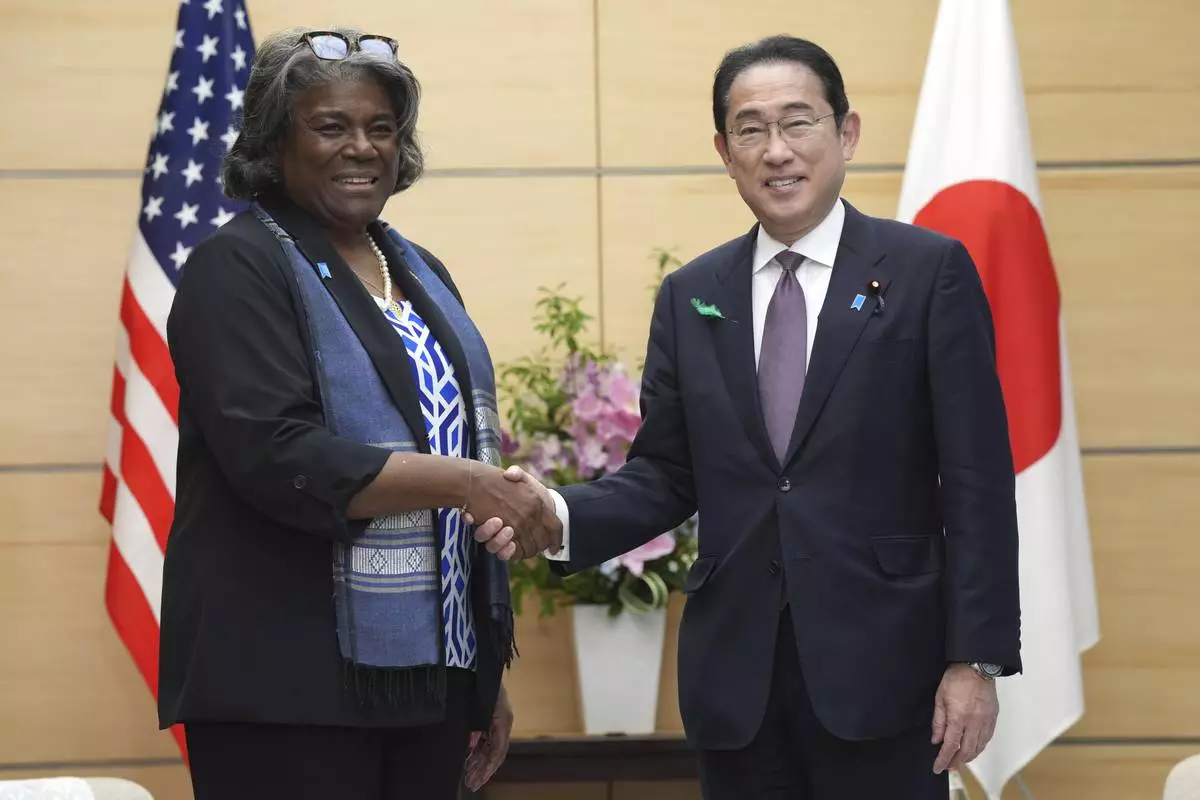
U.S. Ambassador to United Nations Linda Thomas-Greenfield, left, and Japan's Prime Minister Fumio Kishida, right, shake hands during a meeting Friday, April 19, 2024, at prime minister's office in Tokyo. (AP Photo/Eugene Hoshiko, Pool)

U.S. Ambassador to United Nations Linda Thomas-Greenfield, left, and Japan's Prime Minister Fumio Kishida, right, shake hands during a meeting Friday, April 19, 2024, at prime minister's office in Tokyo. (AP Photo/Eugene Hoshiko, Pool)
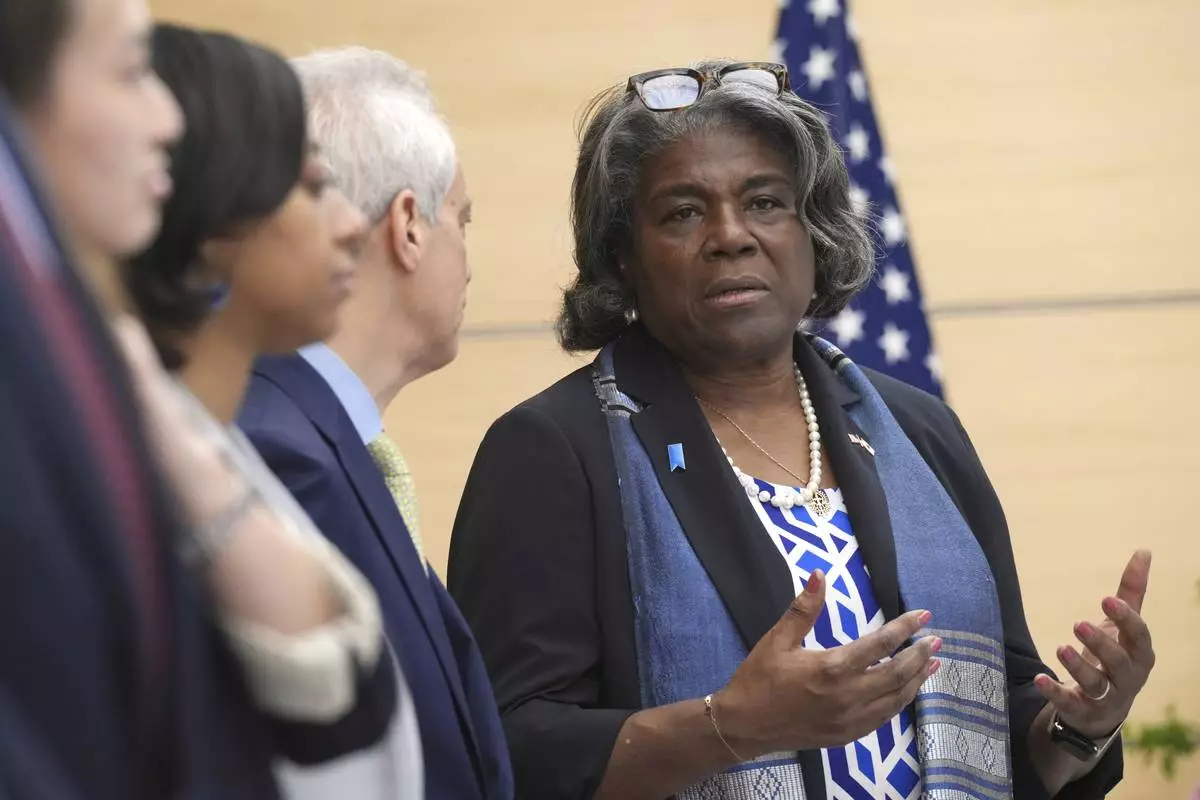
U.S. Ambassador to United Nations Linda Thomas-Greenfield, right, speaks to Rahm Emanuel, U.S. Ambassador to Japan, second right, as they wait for a meeting with Japan's Prime Minister Fumio Kishida Friday, April 19, 2024, at prime minister's office in Tokyo. (AP Photo/Eugene Hoshiko, Pool)
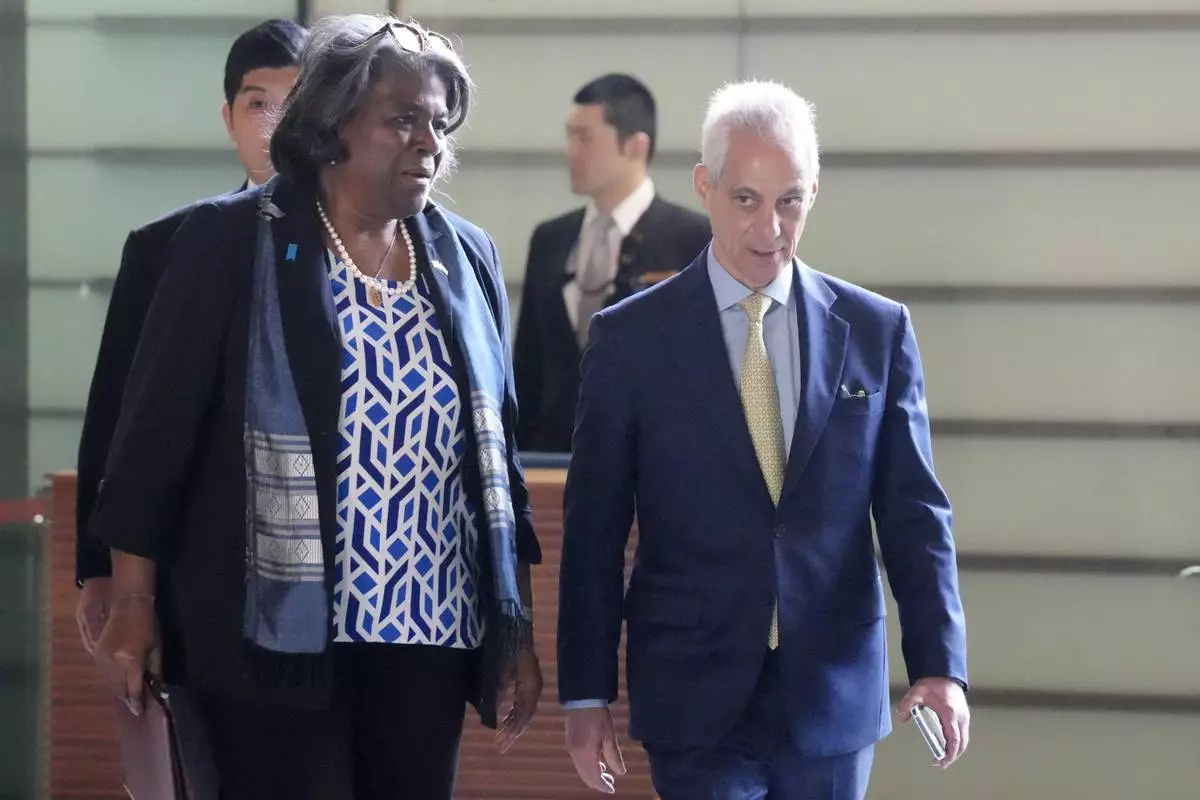
U.S. Ambassador to United Nations Linda Thomas-Greenfield, left, and Rahm Emanuel, U.S. Ambassador to Japan, right, walk to meet Japan's Prime Minister Fumio Kishida Friday, April 19, 2024, at prime minister's office in Tokyo. (AP Photo/Eugene Hoshiko, Pool)
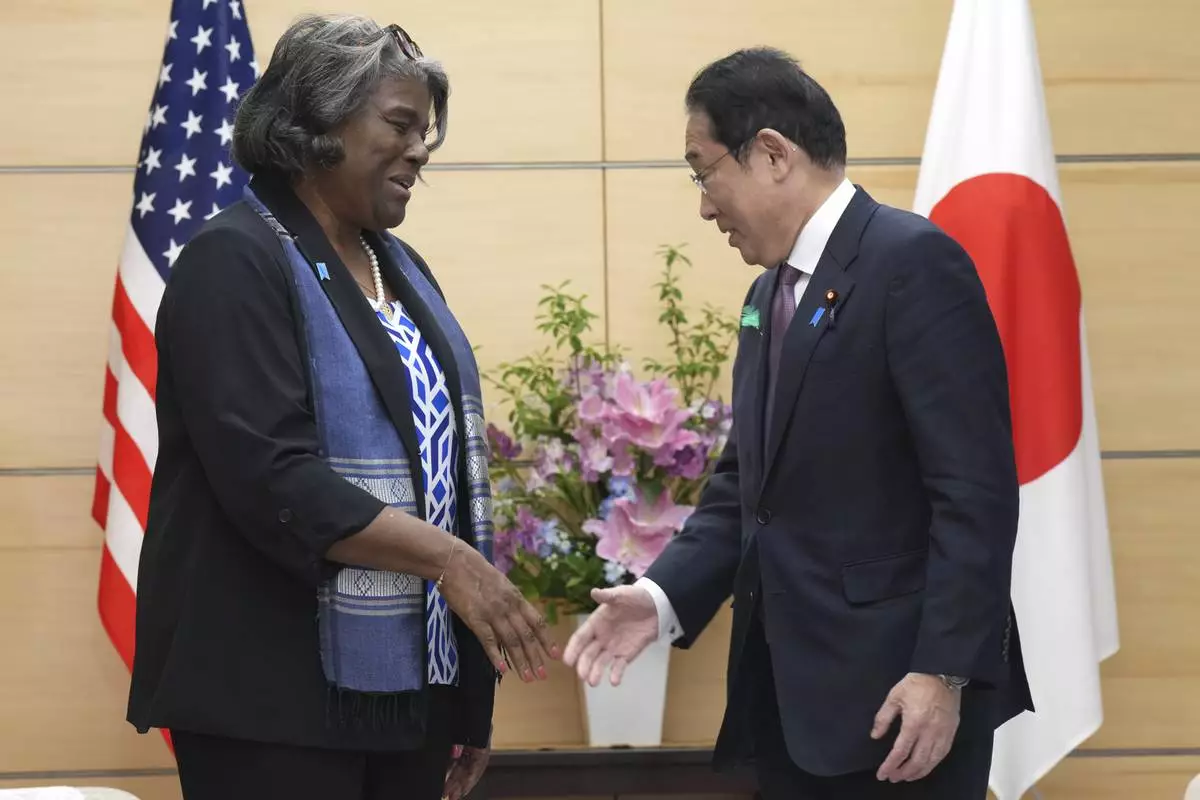
U.S. Ambassador to United Nations Linda Thomas-Greenfield, left, and Japan's Prime Minister Fumio Kishida, right, talk prior to a meeting Friday, April 19, 2024, at prime minister's office in Tokyo. (AP Photo/Eugene Hoshiko, Pool)
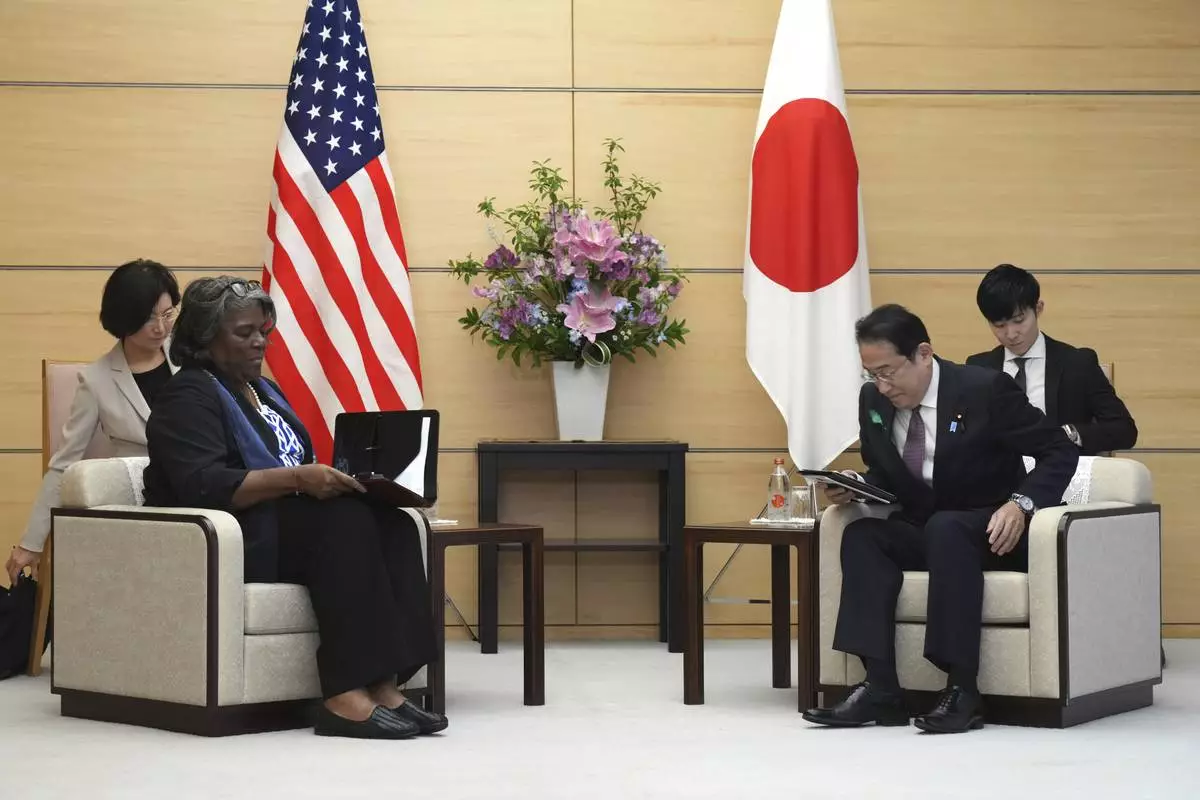
U.S. Ambassador to United Nations Linda Thomas-Greenfield, left, and Japan's Prime Minister Fumio Kishida, right, prepare to talk during a meeting Friday, April 19, 2024, at prime minister's office in Tokyo. (AP Photo/Eugene Hoshiko, Pool)










